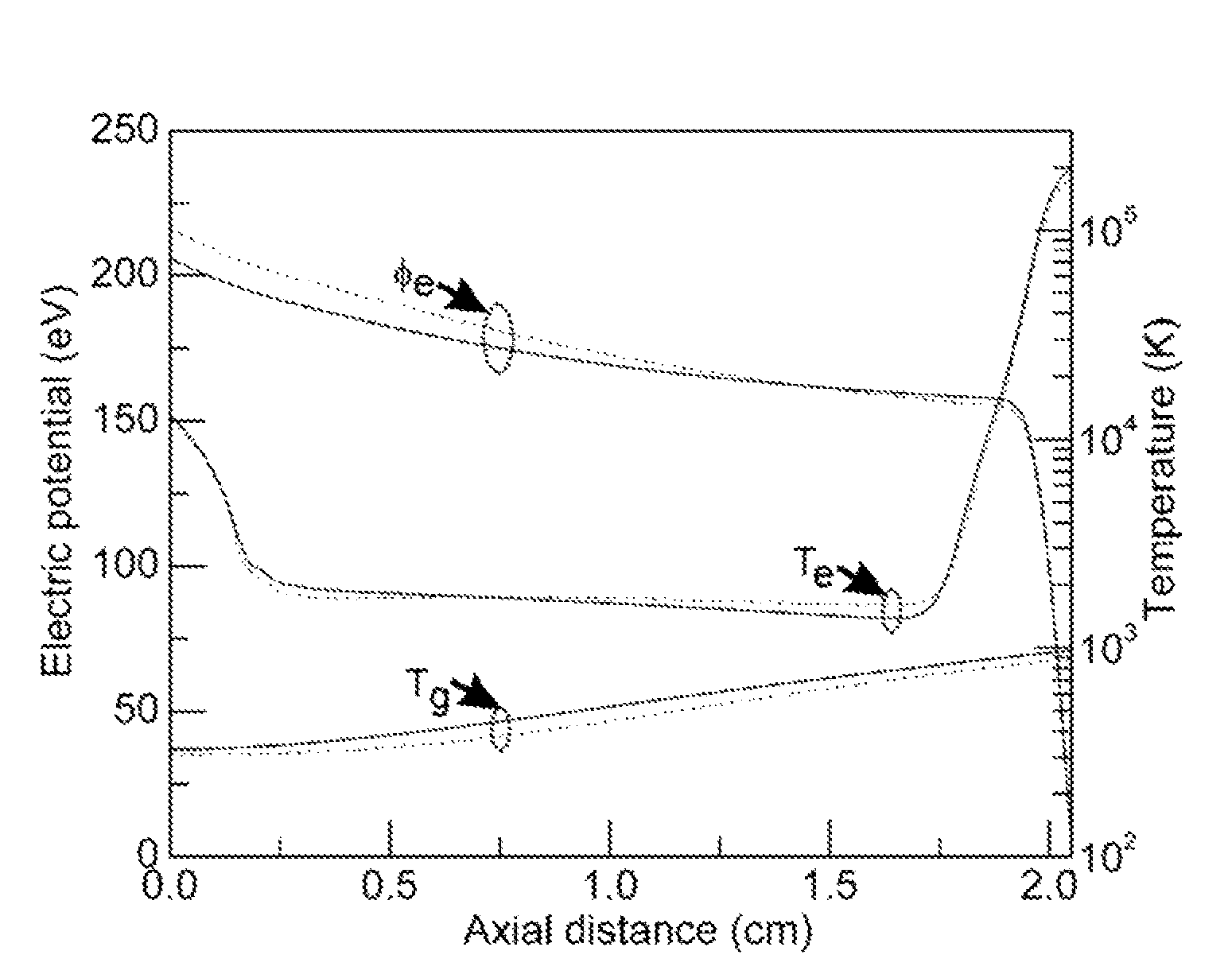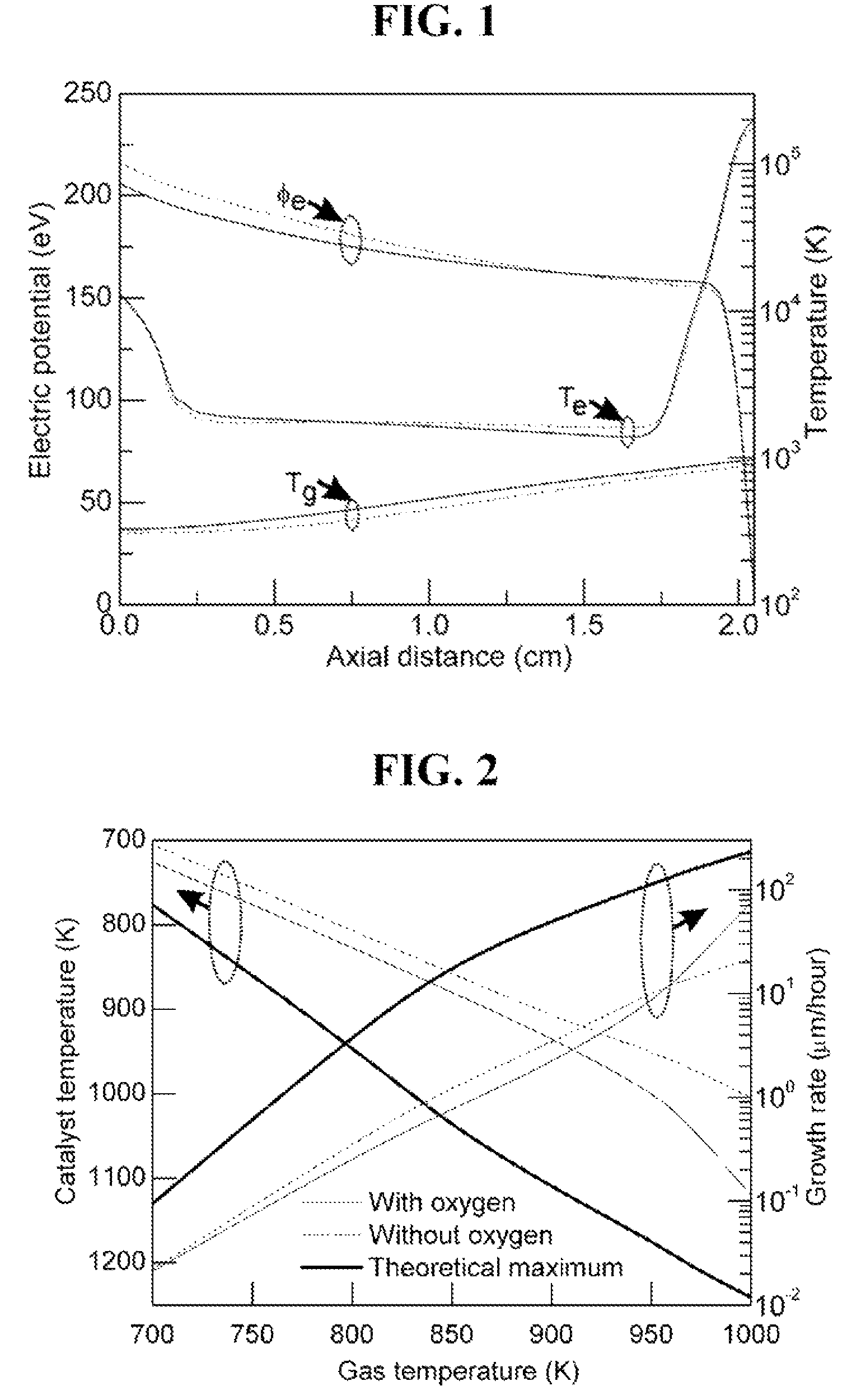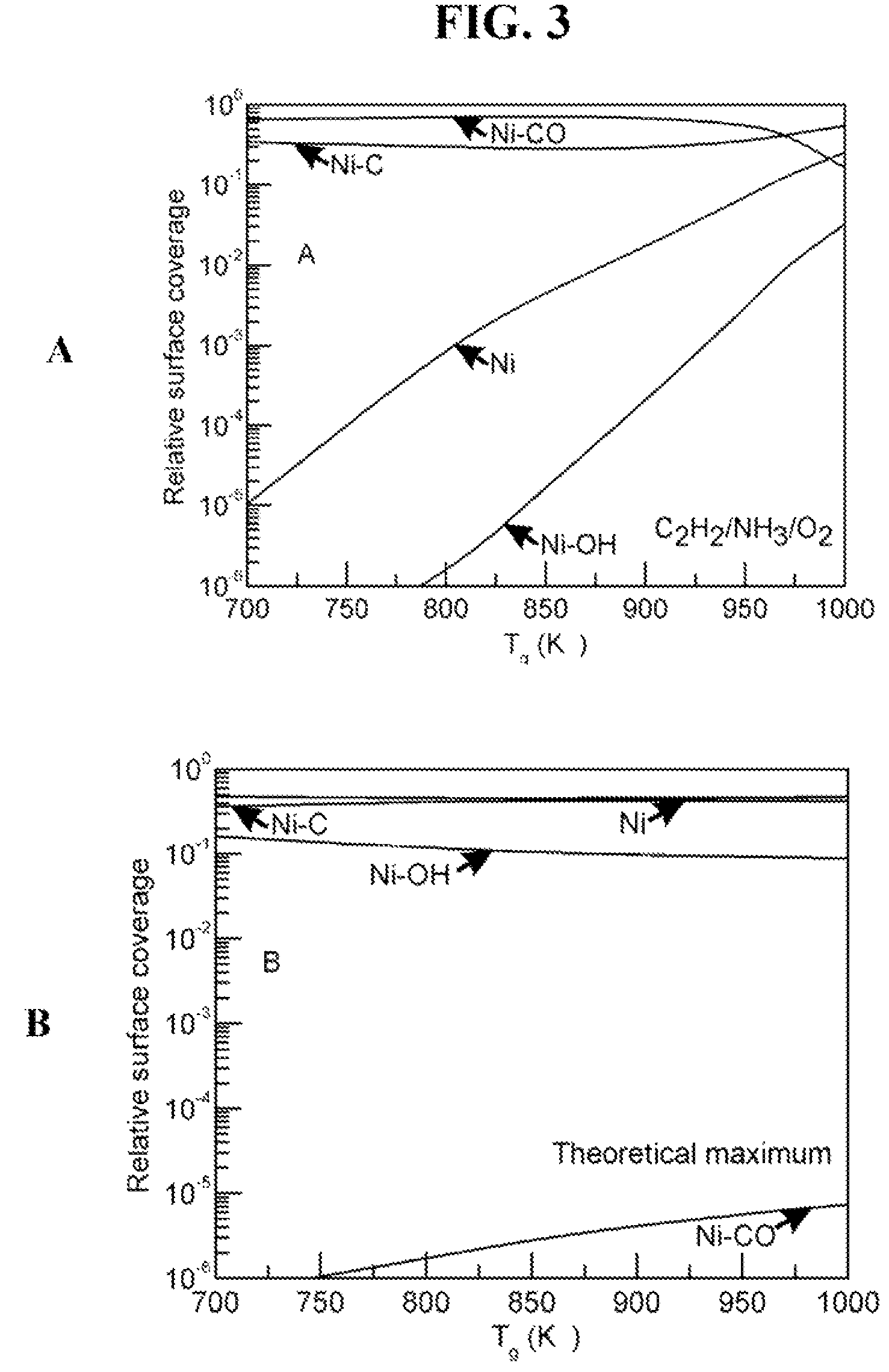Synthesis of carbon nanotubes by selectively heating catalyst
a catalyst and selective heating technology, applied in the direction of crystal growth process, polycrystalline material growth, chemically reactive gas, etc., can solve the problems of high negative bias formation of wafers and device integration problems
- Summary
- Abstract
- Description
- Claims
- Application Information
AI Technical Summary
Benefits of technology
Problems solved by technology
Method used
Image
Examples
example
Selective Heating of Catalyst Using a RF Source
[0040]Low-temperature growth of vertically aligned CNT (VACNT) may be performed in a mixture of acetylene and ammonia gas at several Ton: of total pressure flowing at around 60 and 80 sccm respectively, 700° C., and a bias of 500 V between substrate and a showerhead anode that maintains a current of 200 mA. An example of a system for low-temperature synthesis of CNT is shown in FIG. 6, The system comprises a 13.56 MHz RF source 1 for creating plasma discharge and an additional pulsed RF power source 2 with tunable frequency in the GHz range for inductively heating catalytic nanoparticles. A nonconducting substrate 3 is used to eliminate substrate Joule heating and a cooling system 4 is used for active cooling of the substrate. The system is initially evacuated to approximately 10−6 Torr using, for example, coupled turbo and mechanical pumps 5 so that the chamber 6 can be evacuated first mechanically and then using the turbo pump. To mai...
PUM
| Property | Measurement | Unit |
|---|---|---|
| temperatures | aaaaa | aaaaa |
| temperatures | aaaaa | aaaaa |
| size | aaaaa | aaaaa |
Abstract
Description
Claims
Application Information
 Login to View More
Login to View More - R&D
- Intellectual Property
- Life Sciences
- Materials
- Tech Scout
- Unparalleled Data Quality
- Higher Quality Content
- 60% Fewer Hallucinations
Browse by: Latest US Patents, China's latest patents, Technical Efficacy Thesaurus, Application Domain, Technology Topic, Popular Technical Reports.
© 2025 PatSnap. All rights reserved.Legal|Privacy policy|Modern Slavery Act Transparency Statement|Sitemap|About US| Contact US: help@patsnap.com



